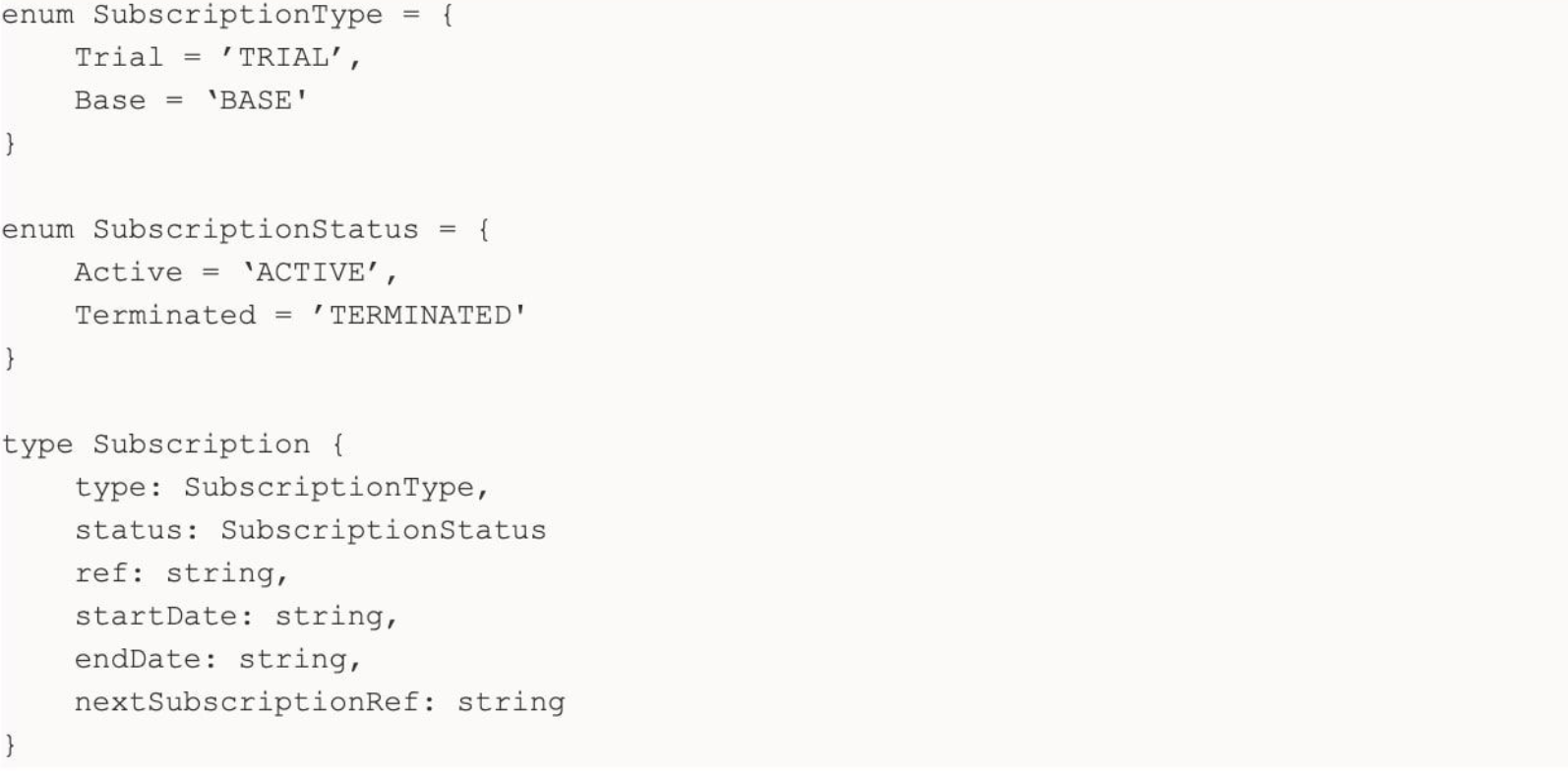To get started
Recently my colleague Guy and I worked on a Node.js/React.js/TypeScript project for the leading fashion e-commerce company in Berlin. This article follows Guy’s views on the benefits provided by Domain-Driven Development, which I also share.
To get started, let’s dive a bit deeper to see how DDD can be applied by using TypeScript. To unify the business logic to be used in a number of microservices we decided to make a distributable NPM package out of it. After a short voting in Google Chat, we coined a name (a rather simple one): Toolkit. The Toolkit library consisted of three main parts: domain entity types, business logic (services) and helpers for testing.
1. Domain entity types
The domain entity types are declared by using the basic TypeScript language features, such as type and enum. So nothing too fancy here. One thing worth mentioning is that since API returned dates in ISO formatted date strings there was no need to type those besides strings.

Some other alternatives such as type ISODateString = string were considered, but the team decided to follow the most simple possible typing here. Usage of type alias would have added more clarity to the string format provided, but on the other hand it would have added in complexity as new developers would need to learn the meaning of it vs. standard TS string type.
Now that the type for Subscription has been declared, let’s move on to the Subscription Service code.
2. Subscription service (simplified example)
We decided to use Services –a design pattern– to abstract the domain entity logic details and hide those from the consumer.

The services were the only place where the domain entity specific business logic is allowed to live. This design decision forced all the consumers of the type Subscription to not contain any business logic, but instead call the exported functions of this service.
Service here acts as an abstraction layer which only takes subscription as parameter for all the exposed functions and hides everything else. This way we keep the code consumer side decoupled from the business logic and possible future changes.
Now we’ve covered the domain types and the logic itself, let’s jump on to the test helpers which we used throughout the stack to simplify testing.
3. Test helpers: Type maker for Subscription
To simplify the testing of, let’s say, a React component and the Node.js route logic, we created test helpers with all the real life scenarios for each domain entity. That vastly simplified the testing as the tests were able to rely on the domain types and different kinds of test type makers.

Type makers are the convenience modules that should be used in unit/integration tests in both cases, when testing node.js or React code. In principle, the module uses a simple type skeleton, which is constructed based on the most default occurrence of such type in the business domain.
makeSubscription function is a module internal function which takes the index signature type of Subscription as a parameter that can be used for overriding.
Module exports only the valid types that occur in the business domain. This guides the test code towards the direction of the actual business domain and that way emphasises the business domain even more from its part.
Conclusion
This project was a great example of how to use fairly basic TypeScript and make it the foundation of your whole app and its core business logic. We utilized DDD and Typescript by building up this library called Toolkit, which could be easily distributed to be used in many decoupled services.
To me, this is DDD at it’s best, because of the clarity it brings to the codebase and its relatively simple implementation per se in TypeScript. A much bigger task here is actually figuring out the domain behavior and the correct types. However, this is already a topic on its own: you can read about it in Eric J. Evans’ book Domain-Driven Design.
Software engineering is a field in which the engineer translates a business to digital means. That’s why domain understanding and its implementation in Domain-Driven Design can help everyone to align into the same business and the same goal. No matter if you are a business owner, product designer or a software engineer, DDD clarifies the common targets of your project at the same time it helps scaling your company.

